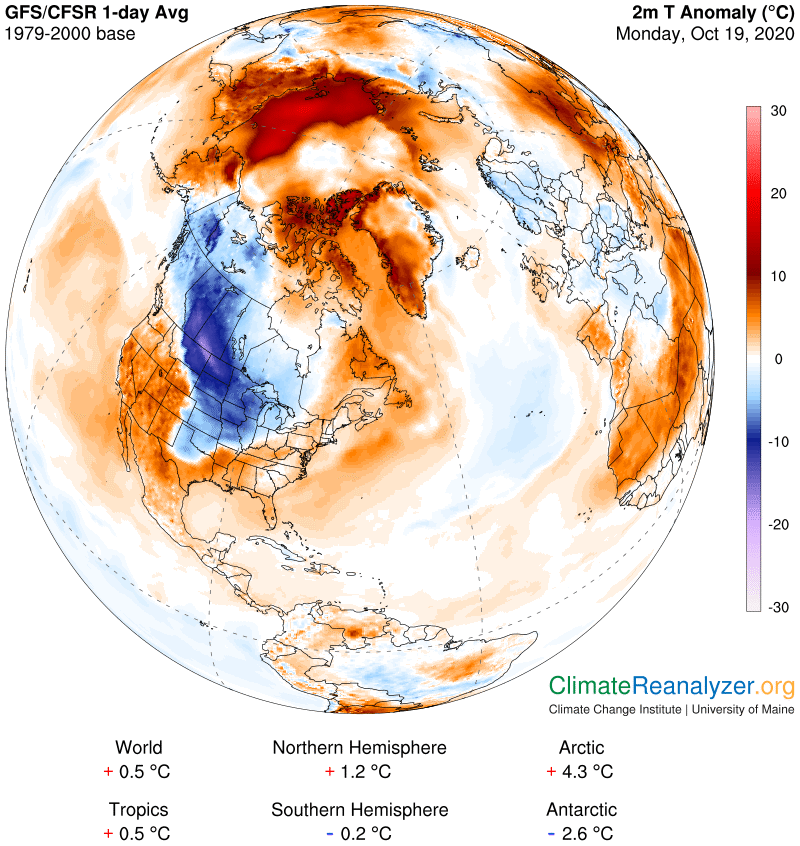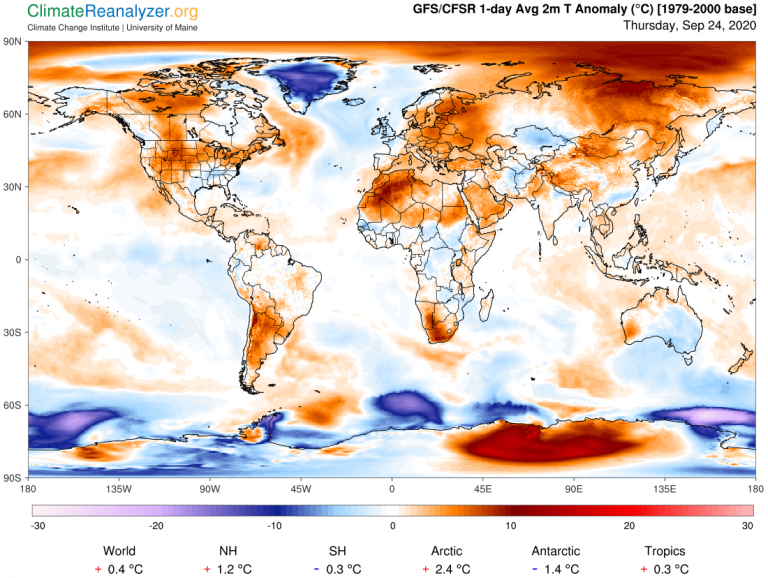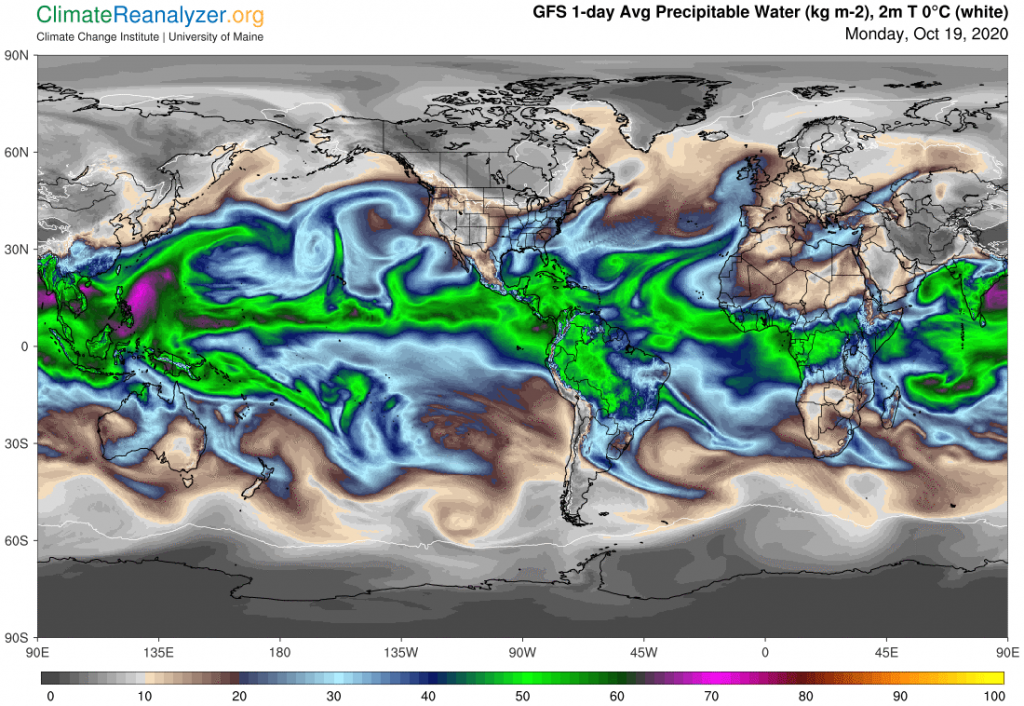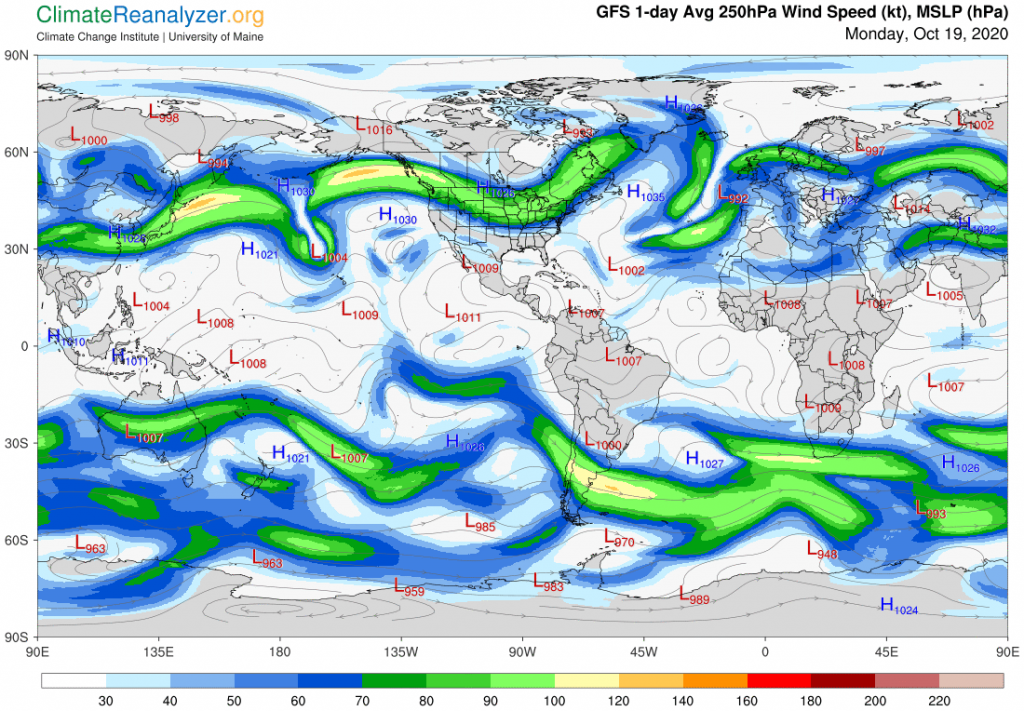Here is today’s view of the unabated heatwave over the Arctic Ocean. After searching through some old letters I now think it all began within a day or two of September 24th, making this at least the 26th day without any sign of a break in the extreme heat. Plus 10C (18F) is extreme enough for getting attention. Today I can see more spots than ever at +15-18C. When will it all stop? Bear in mind that this is the time of year when the “normal” average temperature for each day is trending down, bit by bit. The source of extra heating would need to be trending down even faster, but it’s clearly not doing so. The giant cold anomaly further south is also interesting, with one spot not less than minus-15C, and will deserve a closer look:

Here is the view from September 24th, from a different angle. The extension of unusual heating into nearby Siberia has also been a regular feature in recent weeks.

For the record, or for those who want to know how streaming water vapor could be responsible for the warming, here is the updated vapor “flow chart.” I can see that a stream originating in the eastern half of the Pacific is now sending a small branch across Alaska that’s contributing to the main hotspot. Meanwhile, streams from the Atlantic are seen pushing huge amounts of vapor across the Arctic Circle in two different areas, adding to the overall size of the anomaly. This same image reveals what must be a deficit of water vapor in the area of very dark shading that crosses downward over the North American mainland. That’s typically a sign that any normal approach by streaming vapor is being held back from entering the region, implying the likelihood of a cold anomaly to be the result, as observed above:

The Jetstream map always helps to explain much of the behavior of water vapor streams. I’ve found that when a vapor stream rises from the surface directly into the underbelly of a passing jet it will be absorbed and carried off from that point by the jet. Constant rainfall can then be expected from the jet but some of the vapor will survive and likely be released later whenever the jet weakens. If a vapor streams meets a strong jet wind head-on by running into its side, like the big stream from the east Pacific is doing right now, it will generally be stopped cold, often curled around backward, or possibly splitting into two sections that go off in opposite directions. Some of the vapor is likely to be picked up by the jet and moved along with it as a source of rain or snow going forward.

Vapor streams are always looking for weaknesses in jetstream winds which they can use to advantage by passing through. When successful the next move will invariably be headed in the direction of the pole. This highlights one of the main mysteries involved in the overall activity of upper-level wind systems. Jetstream winds and the conveyors of integrated vapor streams, both of them in motion at all times and at the same altitude, both have a preference for heading eastward rather than west. Jets will also tend to wobble both to the north and south, but show no preference for either direction; vapor streams on the other hand constantly exhibit a determination for moving poleward if they can. Why is this so? Why such a fundamental difference? If the vapors are actually being carried by independent sources of wind, what is it that directs the courses taken by those winds—seemingly unlike the movement of all other kinds of winds, at any level? Or, what else could explain the vapor’s transportation, if it’s not by being blown along by some type of wind?
Carl